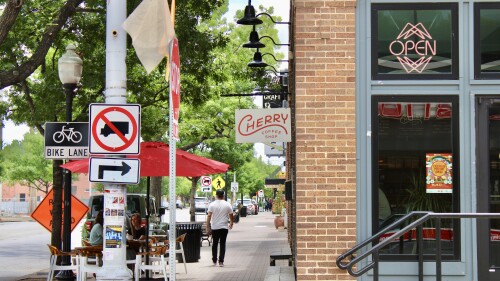35. That’s Fort Worth’s score out of 100 on Walk Score’s walkability meter, making it a “car-dependent city.” Although, it can get so hot in the summer that we bet that score drops to zero in July and August.
A walk score is a numeric ranking that represents the walkability of an area based on pedestrian-friendliness + access to businesses.
Points are given based on the distance between residential areas and businesses, including restaurants, retail, and entertainment. Anything outside a 30+ minute walk is given 0 points. A city’s walkability score is found by calculating the average walkability of many residential addresses in a city.
Although our area as a whole isn’t very walkable, there are some neighborhoods that lend themselves to a higher walkability score.
👟 Bluebonnet Place
This neighborhood has a walk score of 82, making it very walkable. It is located adjacent to the TCU campus + is home to several cafés, restaurants, and grocery stores. Walk Score estimates that most errands can be accomplished on foot.
👟 Bluebonnet Hills
Just next to Bluebonnet Place, this neighborhood has a walk score of 77. It is also classified as very walkable and most errands can be accomplished on foot. It features a Kroger + Worth Hills Pocket Park.
👟 Linwood
This neighborhood located just west of downtown has a walk score of 76. It is considered very walkable + features several restaurants like Velvet Taco and Nizza Pizza.
Not much of a walker? Biking has become increasingly popular in Fort Worth over the last few years. Walk Score currently gives Fort Worth a bike score of 39, making it somewhat bikeable.
The city’s Bike Fort Worth plan has three benchmarks that will likely help to increase this bike score: triple the number of bicycle commuters, decrease the level of bicyclist-related crashes by 10%, and attain designation as a Bicycle Friendly Community through the League of American Bicyclists.












